begin quote from:
Pence visits the Korean DMZ
McMaster: North Korea 'coming to a head
US Vice President Pence visits DMZ amid high tensions with North Korea
Story highlights
- US Vice President Mike Pence is on a tour of Asia
- He arrived in South Korea amid heightened tensions on the peninsula
Seoul, South Korea (CNN)US
Vice President Mike Pence visited the Korean Demilitarized Zone Monday,
a day after the embarrassing failure of a North Korean missile test
which the US and South Korea said exploded on launch.
Standing
within 60 meters (200 feet) of the North Korean border, Pence described
the DMZ as the "frontier of freedom" and added that "all options are on
the table" in pursuing the denuclearization of the Korean Peninsula.
What is the DMZ?
The
demilitarized zone (DMZ) is a heavily-fortified buffer zone, four
kilometers (2.5 miles) wide, that divides North and South Korea.
It was established by the armistice agreement that ended the Korean War, though both sides technically remain at conflict as no peace treaty has ever been signed.
Numerous US officials have visited military bases overlooking the border, and the Panmunjom Joint Security Area, where North and South Korean soldiers stand watch facing each other and several meeting rooms straddle the border between the two countries.
It was established by the armistice agreement that ended the Korean War, though both sides technically remain at conflict as no peace treaty has ever been signed.
Numerous US officials have visited military bases overlooking the border, and the Panmunjom Joint Security Area, where North and South Korean soldiers stand watch facing each other and several meeting rooms straddle the border between the two countries.
Tensions on the peninsula have ratcheted up in recent weeks, amid tit-for-tat saber-rattling from the US and North Korea and analysts' warnings that North Korea was preparing for another nuclear test.
Speaking
at the DMZ, Pence said the US "has always sought peace through strength
and my message here today ... standing with courageous soldiers from
the Republic of Korea is a message of resolve."
The
demilitarized zone (DMZ) is the highly-fortified border between North
and South Korea. It stretches 250 kilometers (160 miles) and is dotted
with military guard posts, mines and defensive structures.
US options on North Korea
Echoing the remarks of US Secretary of State Rex Tillerson last month, Pence said the "era of strategic patience is over."
The US has leaned on China -- North Korea's main ally -- to apply pressure on Pyongyang to curtail its nuclear ambitions.
At
the same it's increased its military footprint in the region by
deploying a naval carrier strike group to waters off the Korean
Peninsula.
US
President Donald Trump held a summit with Chinese President Xi Jinping
earlier this month, and has praised China's turning back of North Korean
coal ships as a "big step" forward in the effort to enlist Chinese pressure on Pyongyang.
Pence
said Monday Trump was "very hopeful that China will take actions to
bring about a change of policy in North Korea. An abandonment of its
nuclear weapons program and its ballistic missile program."
Speaking
Sunday, US national security adviser H. R. McMaster said that when it
came to the North Korean nuclear program "all of our options are on the
table, undergoing refinement and further development."
He emphasized the US hopes not to use military force but warned "this problem is coming to a head."
McMaster
said various US military and intelligence agencies are working on
providing options to "have them ready" for Trump "if this pattern of
destabilizing behavior continues."
On
Friday, North Korea said the dangerous security situation was due to
the "Trump administration's reckless military provocation."
"The
Trump administration, which made a surprise cruise guided missile
strike at Syria on April 6, has entered the path of open threat and
blackmail against (North Korea)," a spokesman for the Korean People's
Army said according to state news agency KCNA.







Show of force
Pence's
visit followed an impressive parade Saturday to mark the "Day of the
Sun," the most important day in the North Korean calendar, when
Pyongyang showed off an array of new missiles and launchers.
Pyongyang
paraded two new intercontinental ballistic missile-sized canisters as
well as displaying its submarine-launched ballistic missile and a
land-based version of the same for the first time, according to
analysts.
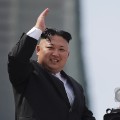
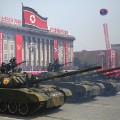
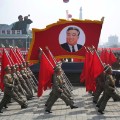



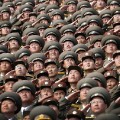
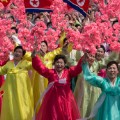
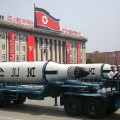
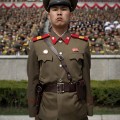
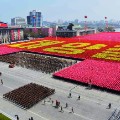

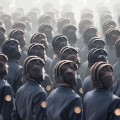
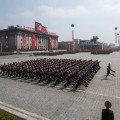
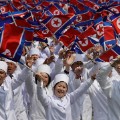
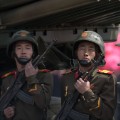
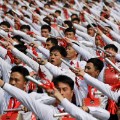
The regime followed that -- according to US and South Korean officials
-- with an attempted missile test Sunday from the eastern port of
Sinpo. That was the site of a ballistic missile test earlier this month
in which the projectile fell into the Sea of Japan, also known as the
East Sea.
If Sunday's missile
launch leads to a nuclear test or an ICBM launch, there would be "a
powerful punishing measure that North Korean authority can't endure,"
South Korean officials said.
US
officials told CNN they did not believe the missile had intercontinental
capabilities, and blew up almost immediately after launch.
















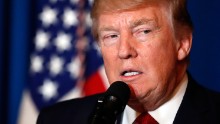





























No comments:
Post a Comment